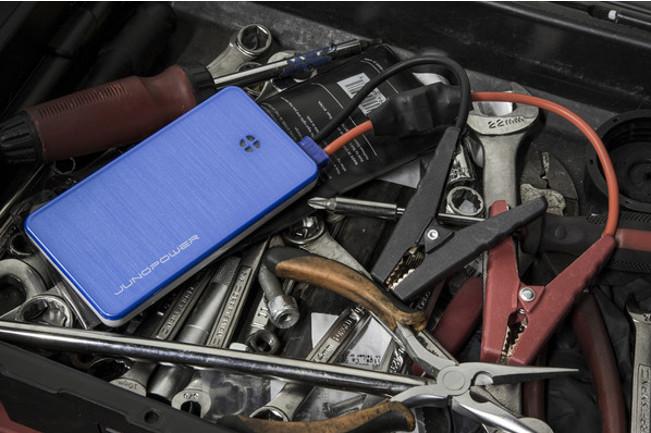
Lately, a lot of things are happening with phone charging. We’ve been promised a 30-second full charge and the possibility of juicing up a phone without the use of wires. Now, JunoPower is presenting us with a new idea. What if you could use your charger to boost something else that’s mobile: your car.
The aptly-named Jumpr is an external battery that is capable of jumping a completely dead car battery in minutes. It has 6,000 milliamps (six times the electric current in a normal iPhone charger) and comes with a 5V 2.1A output for charging smartphones and tablets. In its press release, the battery promises that “users will never again have to worry about being stranded with a dead phone or car battery.”
“We all know what it feels like to get caught with a dead car battery; you could be stuck waiting around for hours for a tow truck or friend to arrive,” said Dennis Lee, the CEO of JunoPower. “The Jumpr is a simple to use solution that gets you back on the road in minutes … Travelers no longer need to worry about lugging around a 10-20 pound battery jumper, or tirelessly searching for a wall outlet if their phone dies on-the-go. The Jumpr solves all your power needs in a tiny 5.5” x 3” x .6” frame that weighs only 7 ounces.”
The battery is mainly meant for charging your gadgets outdoors or in a car, which is great if you would like to cut down on lurking near wall outlets. However, the party trick of jumping a car is a pleasant bonus. If you’re sold on the Jumpr, Junopower would like to sell you one now. The battery is being sold through pre-orders for $70 at the company’s website. The offer is only until May 1 and then the price jumps to $90.
Editors' Recommendations
- How to find your lost phone (tips for iPhone and Android)
- How to use iMessage on an Android phone or tablet
- The 6 best car phone holders in 2024
- An Android phone you haven’t heard of just won the charging game
- How to change your iPhone’s notification sound in iOS 17


